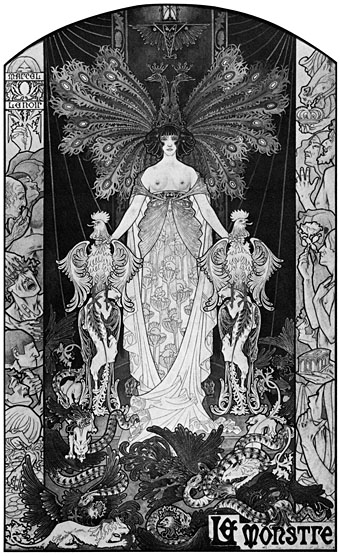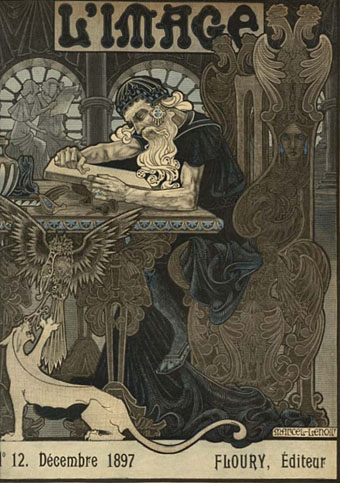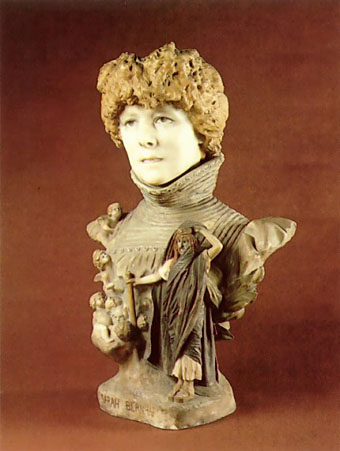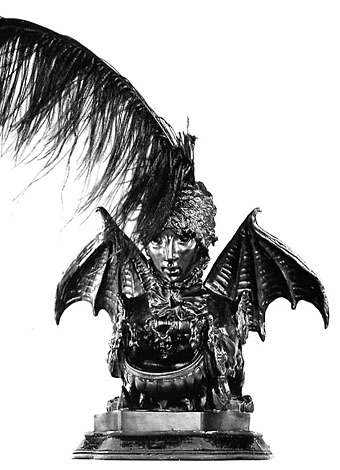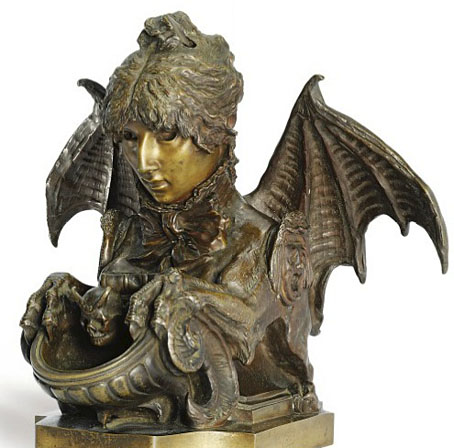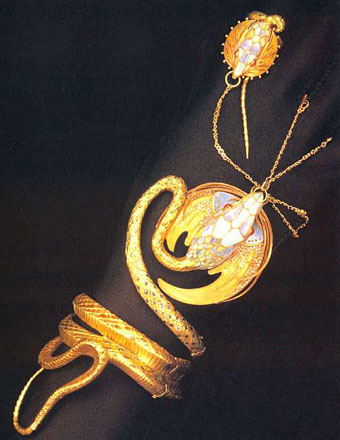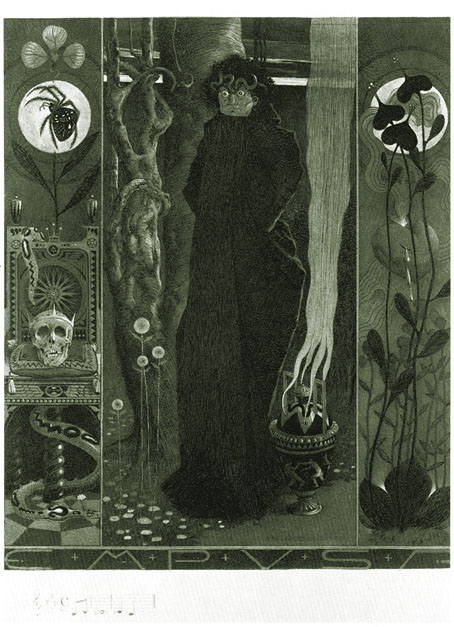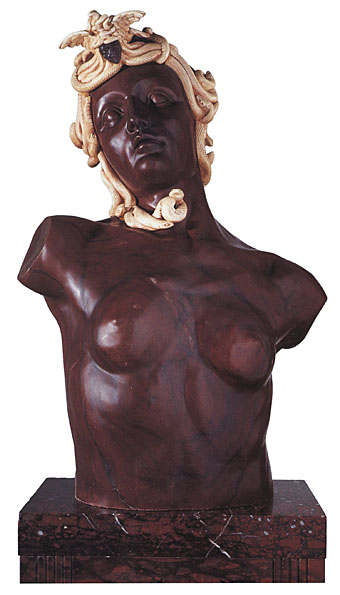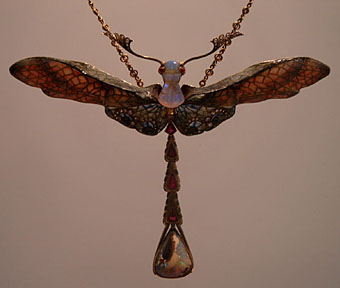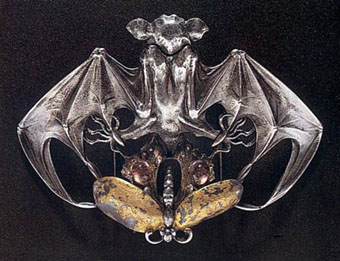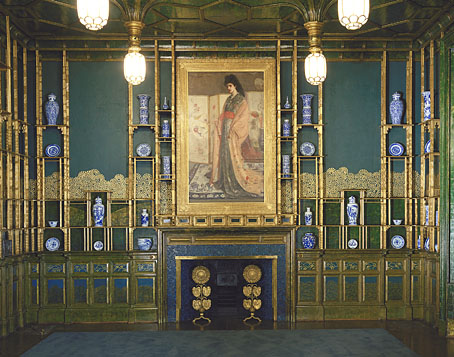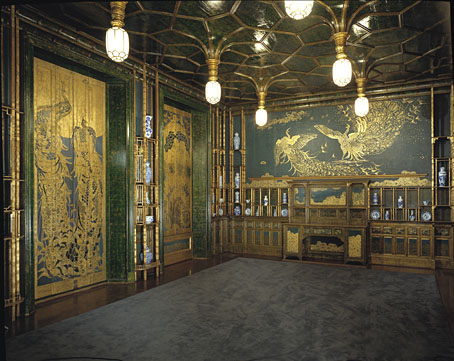Continuing the theme of the fin de siècle feminine, there’s this bizarre (undated) piece by Marcel Lenoir representing…what? A witch? Some demoness? Or woman in general? Considering the often overt misogyny of the period, the latter interpretation is quite possible; there were more than enough artists prepared to see women as the foundation of all evil as well as place them on pedestals. In our post-Freudian age it’s impossible not to do a double-take at a picture of a bare-breasted woman gripping a pair of cocks…
Marcel Lenoir is yet another artist who receives scant attention online but I did find this nice magazine cover from an 1897 number of L’Image. There’s more splendid cover scans here.
Previously on { feuilleton }
• The Divine Sarah
• Carlos Schwabe’s Fleurs du Mal
• Empusa
• The art of Philippe Wolfers, 1858–1929
• The Masks of Medusa

